Crossing Borders by Bus in South America
Tales of border control.
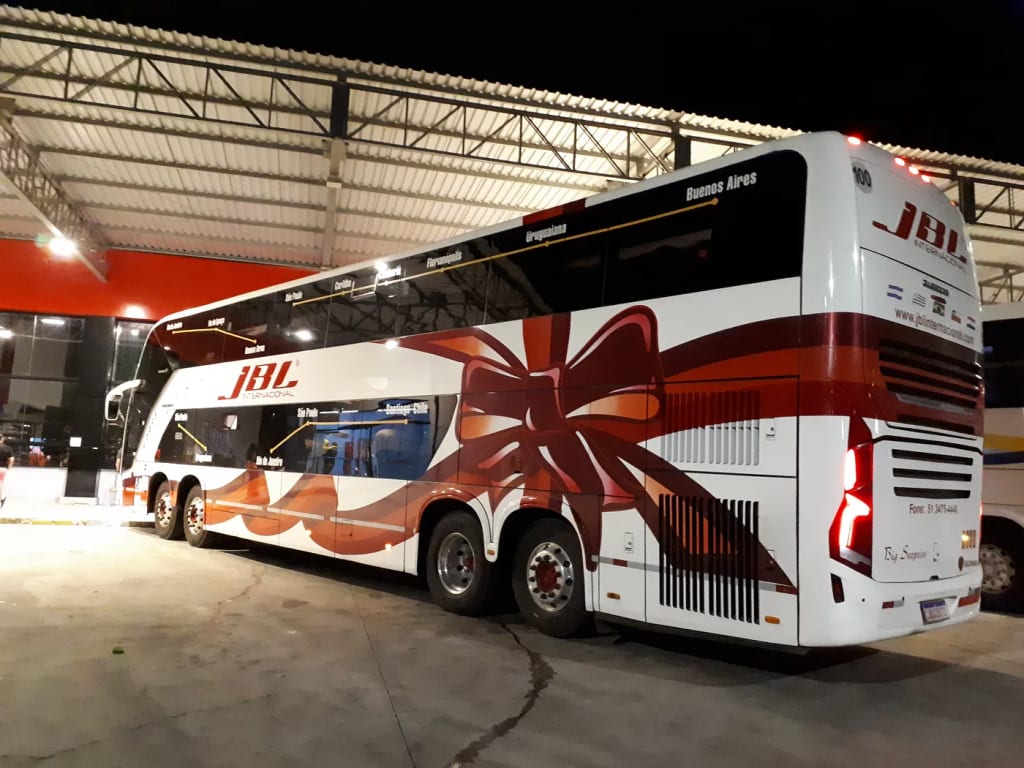
Tôrres, Brazil to Buenos Aires, Argentina
My epic 24-hour journey began at what I would never be able to call a bus stop of any kind. Hanging out under a highway overpass, we kept our eyes on the dirty, run-down store across the street for the JBL bus to stop briefly and pick me up.
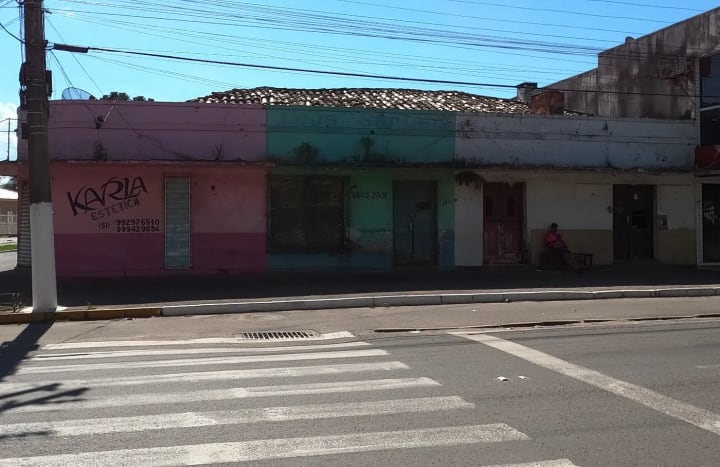
In rapid Portuguese, my friend told the bus driver all he needed to know.
“What did he say,” I asked after they finished their conversation and my luggage was tagged and loaded into the undercarriage.
“He wanted to know if you had your documents and I told him you were from Canada. He said, well, you’d have no problems crossing the border then.”
I smiled knowing that I travel on a New Zealand passport. My friend did too but it made no difference. Passports from developed countries tend to run together in the minds of some. Being born and raised in South Africa, I understand. It took a lot of effort, time, and money to get my New Zealand citizenship back in 2007.
I boarded the bus shedding a few tears as I said goodbye to a man who had become an incredible friend, and found my seat. For the most part, the journey was good and I had a few moments of awe as the bus cruised towards my new destination.
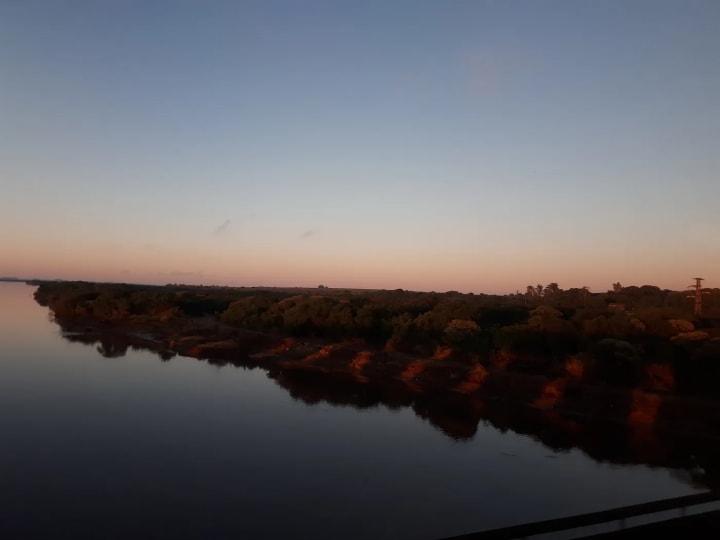
Crossing the border into Argentina couldn’t have been easier. When leaving Porto Alegre, one of the bus drivers collected our passports and residence cards. I’m not going to lie, watching someone walk away with my passport when I didn’t have the language to ask where it was going concerned me greatly.
But, when in Rome.
Shortly after 6 a.m. the next morning, a young woman climbed the stairs to the top deck, placed the stack of official documents on a ledge and began calling our names. I spotted my passport on the bottom of the pile and kept an eye on it, reaching for the little black book the moment she picked it up.
Only one stamp had been added for leaving Brazil. At that moment, it concerned me that I hadn’t been stamped into Argentina but I figured that border control knew their job better than I did.
As we had sat idling at the border crossing, sleeping, staring at our screens or out the windows, the bus company had done our dirty work for us and stamped us through the border.
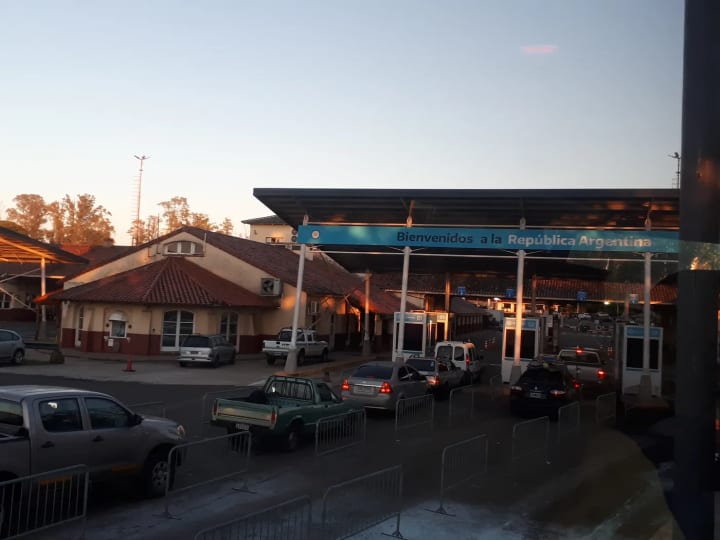
Well, that was easy, I thought. Hopefully, the rest of my border crossings will be as painless.
They weren’t!
Buenos Aires, Argentina to Asunción, Paraguay
With a 24-hour bus ride behind me, the prospect of a 21-hour journey didn’t feel as daunting, plus I was travelling with a Canadian friend this time. I wouldn’t have a stranger sitting beside me for almost a day.
Navigating our way onto the bus, however, hit a small snag as the two drivers rifled through the pages of my passport for my entry stamp into Argentina. Having only found the exit visa from Brazil myself, I watched anxiously as they chatted amongst themselves, the second knowing the deal and letting the first know that all was good.
I let out a sigh of relief as they handed back my passport and motioned for me to board the vehicle.
The entry into Paraguay was far from smooth sailing though.
We entered the country around 7:30 the next morning. Nothing was done for us as we were told to get off the bus and directed towards a prefabricated container-like building to get stamped out of Argentina.
I now know that Argentina does not offer passport stamps, instead everything is done electronically. My passport was scanned followed by a few taps on a keyboard and I was ready to move to the identical adjacent container to get stamped into Paraguay.
This is where things got a little sticky.
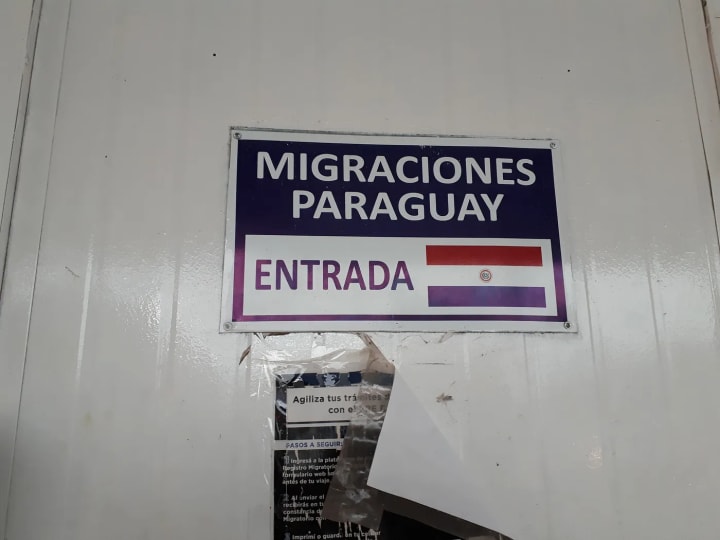
Every single person on the bus had residency cards and within a minute or two were handed printed slips which had to be handed back at the end of their visit.
The border control person got to us, the two gringos with foreign passports, and looked at us like we were aliens from another galaxy, clearly flummoxed about what to do with a New Zealand and a Canadian passport.
She asked some questions in Spanish which I did my best to answer despite being a beginner in the language. After searching for some answers on her phone and attempting to call someone else, she asked us to step aside whilst she processed the rest of the bus dwellers, all filing back onto the bus without a care in the world.
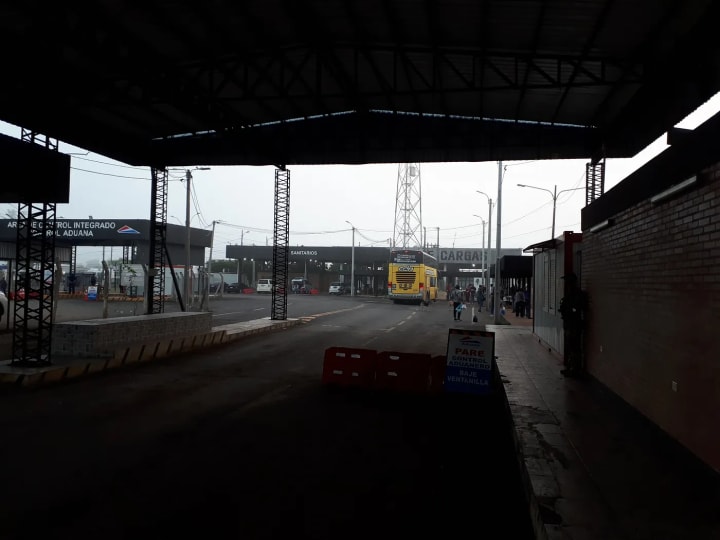
After the last traveller was processed, she beckoned us over, asking a few more questions I tried my best to understand.
She asked how and when we were leaving Paraguay and I answered according to my travel plans, lying for my friend who hadn’t made any plans to leave the country.
I’d had a feeling before entering Paraguay that I would need to have evidence of onward travel plans and I’ve come to trust my instincts.
She eyed us suspiciously, probably wondering what the hell we were doing on a bus full of locals instead of flying. One of the bus drivers came over and slipped some money to another who handed it to her. She promptly put it in her pocket and shortly thereafter, we were stamped into Paraguay.
I’d never been happier to see money exchange hands.
A wave of relief washed over me as I wandered back to the bus, happy not to have to wrack my brain anymore to figure out what she was attempting to ask me.
Forty minutes later we pulled into the bus station in Asunción and I was eager to leave the experience behind me as I flew into the arms of another friend waiting for us on the platform.
Phew! Here’s hoping the next crossing is easier.
Spoiler alert: it was.
Asunción, Paraguay to Foz Do Iguaçu, Brazil
Although my alarm had gone off at 4 a.m. to ensure I was ready for the driver to make the hour-and-fifteen-minute journey from Caacupé to Asunción, I was happy to wander around the small bus station with plenty of time to board. When I travel, I would rather have far too much time in a station or an airport than rush to make flights or connections.
In comparison to my last two bus rides, this journey would be short, scheduled to take only six hours to reach Foz do Iguaçu.
About an hour into the ride, the bus suddenly pulled over to the side of the road near a few roadside stalls and people selling warm chipas got on, calling out loudly as they sold like hotcakes.
Chipas are akin to cheese bagels and I bought one as I have a weakness for baked goods.

We pulled back onto the highway, continuing our journey once everyone had bought their share of the delicious treat. Before long we reached Ciudad del Este and entered the queue to cross the bridge over the Paraná River and into Brazil.
It was here that we came to a standstill.
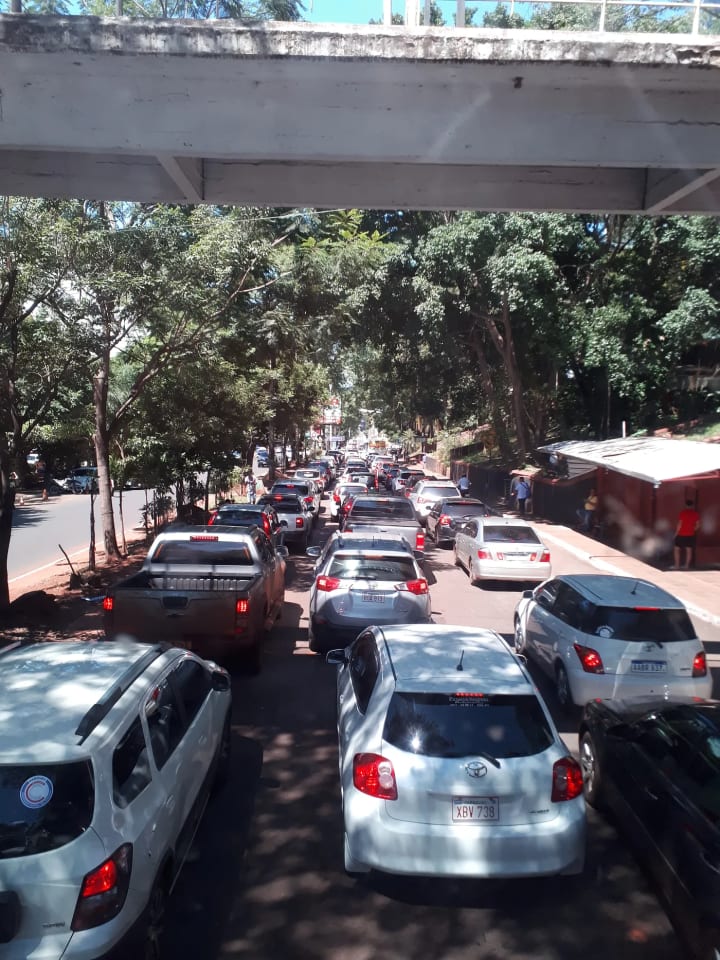
All-in-all, it took three hours to complete the border crossing as opposed to one, making the entire journey eight hours rather than the scheduled six. That will teach me to travel on a long weekend — to be fair, I hadn’t known it was a long weekend when I booked it — something to be aware of in the future.
We finally reached the small immigration building on the Paraguayan side of the bridge, piling out of the airconditioned bus and into the humidity as we waited to be stamped out of the country.
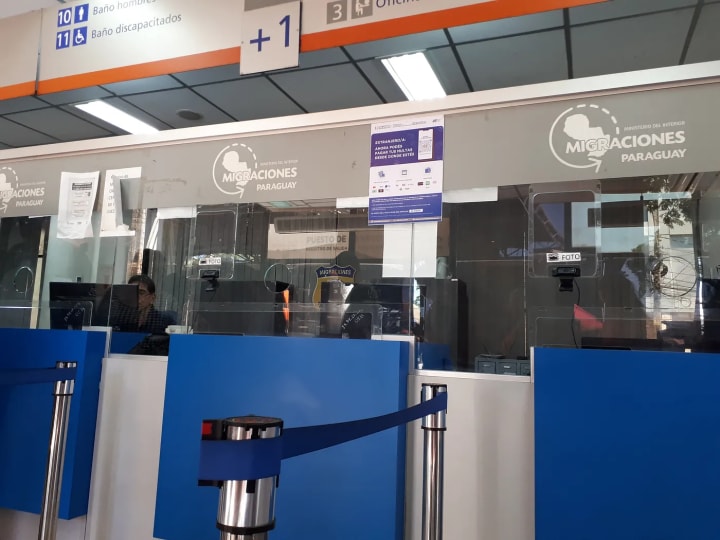
This building was far nicer than the container I had visited two weeks back and this time there were a couple of people with passports. The border control officer had a handle on the situation, probably due to the number of foreigners now living in Paraguay who enjoy heading to Foz do Iguaçu for short getaways.
He asked me to look at the camera as he scanned and stamped my passport and I thanked him in Spanish as I walked away, relieved that this journey to an immigration window had been more seamless than the last.
Back on the bus, we travelled a little further in the start-stop traffic where we were told to exit once more to get stamped into Brazil.
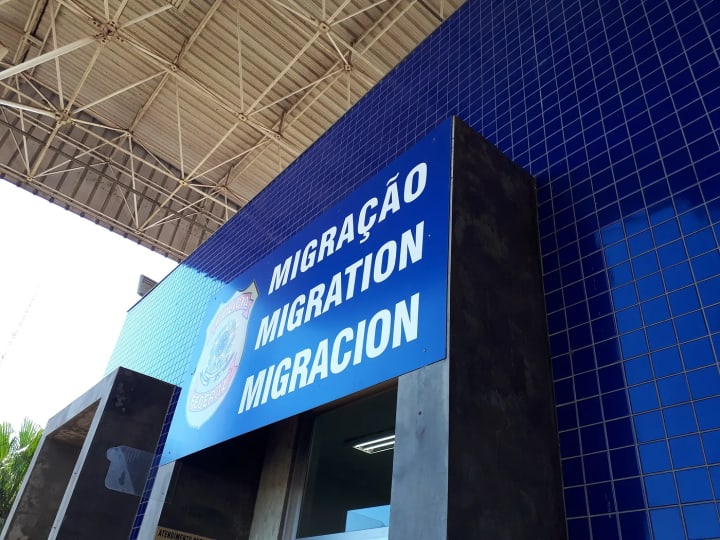
As we waited outside the brick building (there was a three-person limit inside), we noticed a poster on the wall with a QR code suggesting that completing our entry details online would make the process quicker. After some fiddling around with the link, I received my barcoded PDF file and waited to be let into the office for my stamp.
A woman came out, clearly frustrated, and told us to move to the Express window where those with the QR code were to be processed. I wandered over and soon had a nice shiny new stamp in my passport welcoming me back to Brazil.
Ah, Brazil, I have missed you so, I thought as I walked away thankful to be done with the difficulties of Paraguay.
All tension drained from my body as the bus rolled over the Puente de la Amistad (Friendship Bridge) and into a country where I have felt welcome from the moment I touched down in mid-November 2023.
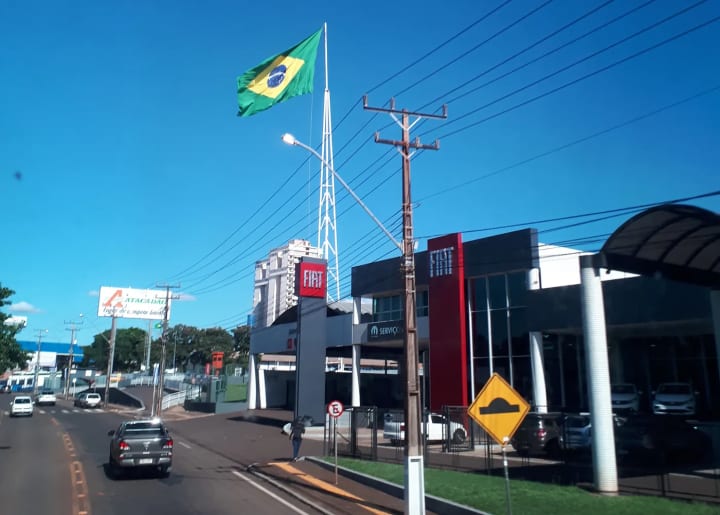
The change in infrastructure and development was immediate and I stared down in amazement at the well-built and neatly painted road in front of me after watching miles of pothole-infused roads go by just a few minutes before.
Bem vindo ao Brasil!
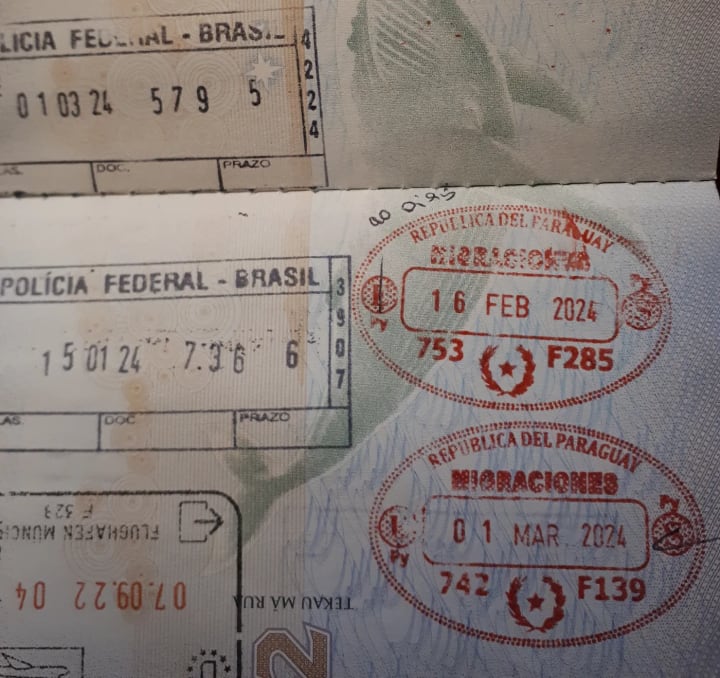
All I can say is, I’m very happy I possess a local passport for my next destination: South Africa.
Please feel free to buy me a coffee if you like what you read.
About the Creator
Vanessa Brown
Writer, teacher, and current digital nomad. I have lived in seven countries around the world, five of them with a cat. At forty-nine, my life has become a series of visas whilst trying to find a place to settle and grow roots again.






Comments
There are no comments for this story
Be the first to respond and start the conversation.